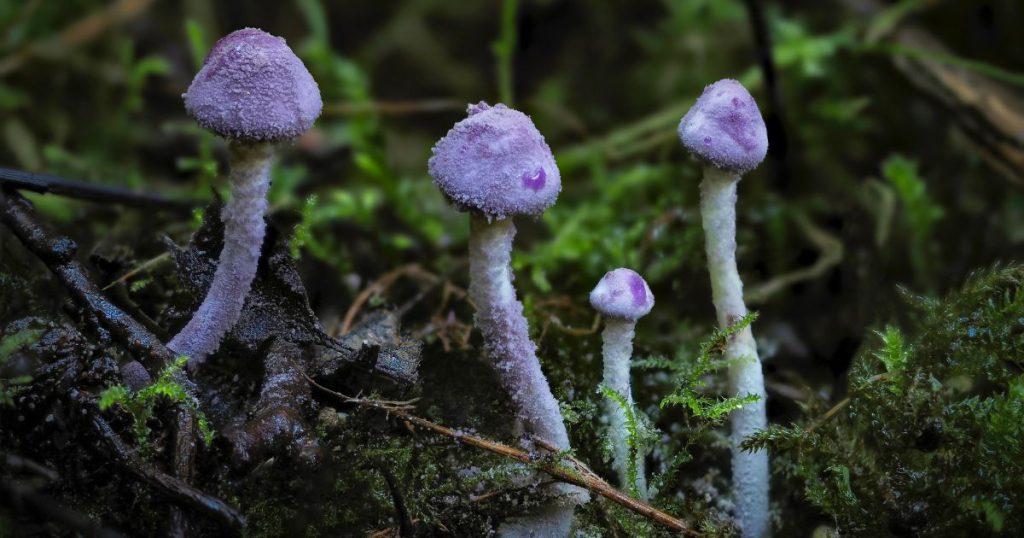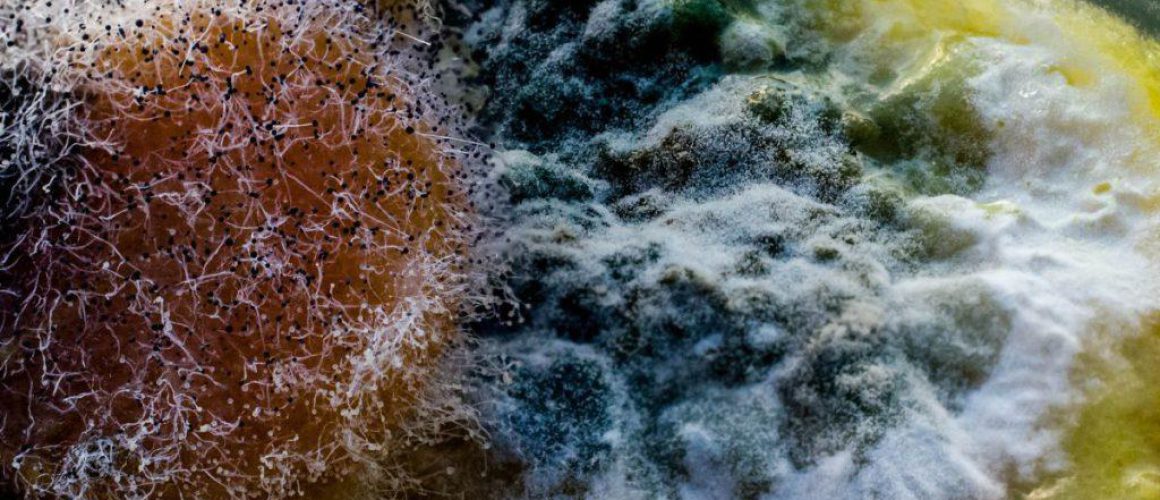Fungal reproduction and life cycles
Table of Contents
Key Summary Table: Fungal Reproduction
| Aspect | Description |
|---|---|
| Asexual Reproduction | Fungi produce spores that are genetically identical to the parent organism. This can occur through various methods, including budding, fragmentation, and the production of asexual spores. |
| Sexual Reproduction | Involves the fusion of two compatible mating types, resulting in the production of sexual spores, which are genetically different from the parent organisms. |
| Life Cycles | Fungi exhibit a variety of life cycles, each with its unique stages and processes. The life cycle of a fungus typically involves alternating between asexual and sexual reproduction. |
| Impact on Ecosystems | Through their reproductive processes, fungi contribute to nutrient cycling and the formation of soil. They also form symbiotic relationships with other organisms. |
“Fungal reproduction” might sound like a topic for a biology textbook, but trust me, it’s more like an epic adventure! In this article, we’ll explore the fascinating life cycles of fungi, revealing how these tiny organisms make a big impact on our world. Stay tuned!

Introduction
Fungal reproduction is a fascinating aspect of the field of Mycology. It’s a process that showcases the adaptability and survival tactics of fungi, organisms that play a crucial role in our ecosystems. In this article, we will explore the intriguing world of fungal reproduction and the diverse life cycles they exhibit.
Fungi are essential for the health of our ecosystems and for our health.
Mycology, the study of fungi, offers us a glimpse into a world that is often overlooked. Yet, it’s a world that is teeming with life and complexity. Fungi are everywhere – in the air we breathe, the soil we walk on, and even on our bodies. They play a vital role in the environment, breaking down organic matter and recycling nutrients back into the ecosystem.
In the following sections, we will take a closer look at the unique characteristics of fungi, the process of fungal reproduction, and the various life cycles that fungi exhibit. We will also discuss the impact of fungal reproduction on ecosystems. So, let’s embark on this journey of discovery together.
What is Mycology?
Mycology is a branch of biology that focuses on the study of fungi. It encompasses a wide range of organisms, from the mushrooms that we commonly see in forests and grocery stores to the microscopic fungi that live in soil and water. Mycology is a field that is continually evolving, with new species being discovered and our understanding of fungal biology expanding.
The study of fungi is not just about identifying different species. It also involves understanding their life cycles, how they interact with their environment, and their role in ecosystems. Fungi are incredibly diverse, with an estimated 1.5 to 5 million species worldwide. They have a wide range of forms and functions, making them a fascinating subject of study.
Mycology also has practical applications. Fungi are used in various industries, including food production, medicine, and biotechnology. They are also essential for the health of our ecosystems, playing a vital role in nutrient cycling and decomposition.
Understanding Fungi
| Characteristic | Description |
|---|---|
| Heterotrophic | Fungi obtain their nutrients by absorbing organic material from their environment. |
| Hyphae and Mycelium | Fungi grow through a network of thread-like structures called hyphae, which form a mycelium. |
| Cell Walls | Fungi have cell walls made of chitin, a substance also found in the exoskeletons of insects and other arthropods. |
| Reproduction | Fungi reproduce through spores, which can be produced sexually or asexually. |
Before we can fully appreciate the process of fungal reproduction, it’s essential to understand what fungi are. Fungi are a group of eukaryotic organisms that include yeasts, molds, and mushrooms. They are distinct from plants and animals and have unique characteristics that set them apart.
Fungi are heterotrophic, meaning they obtain their nutrients by absorbing organic material from their environment. They do this through a network of thread-like structures called hyphae, which penetrate the substrate they are growing on. This network, known as a mycelium, is the main vegetative part of a fungus.
Fungi also have cell walls made of chitin, a substance also found in the exoskeletons of insects and other arthropods. This is one of the characteristics that distinguish fungi from plants, which have cell walls made of cellulose. Fungi reproduce through spores, which can be produced sexually or asexually.
Key Points about Fungi
- Fungi are a group of eukaryotic organisms that include yeasts, molds, and mushrooms.
- They are distinct from plants and animals and have unique characteristics.
- Fungi are heterotrophic, meaning they obtain their nutrients by absorbing organic material from their environment.
- They have cell walls made of chitin, a substance also found in the exoskeletons of insects and other arthropods.
- Fungi reproduce through spores, which can be produced sexually or asexually.
Fungal Reproduction – An Overview
| Type | Description |
|---|---|
| Asexual Reproduction | Involves the production of spores that are genetically identical to the parent organism. |
| Sexual Reproduction | Involves the fusion of two compatible mating types, resulting in the production of sexual spores that are genetically different from the parent organisms. |
Fungal reproduction is a captivating aspect of Mycology. It’s a process that showcases the adaptability and survival tactics of fungi. Fungi can reproduce both sexually and asexually, depending on the species and environmental conditions.
In asexual reproduction, fungi produce spores that are genetically identical to the parent organism. This can occur through various methods, including budding, fragmentation, and the production of asexual spores. Asexual reproduction allows fungi to rapidly colonize new areas and adapt to changing environmental conditions.
Sexual reproduction in fungi involves the fusion of two compatible mating types. This results in the production of sexual spores, which are genetically different from the parent organisms. Sexual reproduction increases genetic diversity, enhancing the ability of fungi to adapt to new environments and resist diseases.
Key Points about Fungal Reproduction
- Fungi can reproduce both sexually and asexually, depending on the species and environmental conditions.
- Asexual reproduction allows fungi to rapidly colonize new areas and adapt to changing environmental conditions.
- Sexual reproduction increases genetic diversity, enhancing the ability of fungi to adapt to new environments and resist diseases.
- The specific life cycle that a fungus follows depends on the species and environmental conditions.
The Life Cycles of Fungi
| Life Cycle | Description |
|---|---|
| Asexual Life Cycle | Primarily involves asexual reproduction, with sexual reproduction occurring less frequently. |
| Sexual Life Cycle | Involves both asexual and sexual reproduction. |
Fungi exhibit a variety of life cycles, each with its unique stages and processes. The life cycle of a fungus typically involves alternating between asexual and sexual reproduction. The specific life cycle that a fungus follows depends on the species and environmental conditions.
In some fungi, the life cycle primarily involves asexual reproduction, with sexual reproduction occurring less frequently. These fungi produce asexual spores that germinate to form new mycelia. When conditions are right, these fungi may undergo sexual reproduction, resulting in the production of sexual spores.
Other fungi have life cycles that involve both asexual and sexual reproduction. These fungi produce asexual spores that germinate to form mycelia. The mycelia then produce sexual spores, which germinate to form new mycelia. This cycle continues, allowing the fungus to colonize new areas and adapt to changing conditions.
Key Points about the Life Cycles of Fungi
- Fungi exhibit a variety of life cycles, each with its unique stages and processes.
- The life cycle of a fungus typically involves alternating between asexual and sexual reproduction.
- Some fungi have life cycles that primarily involve asexual reproduction, with sexual reproduction occurring less frequently.
- Other fungi have life cycles that involve both asexual and sexual reproduction.
The Impact of Fungal Reproduction on Ecosystems
The reproduction and life cycles of fungi play a significant role in ecosystems. Through their reproductive processes, fungi contribute to nutrient cycling and the formation of soil. They break down organic matter, releasing nutrients back into the environment that can be used by other organisms.
Fungi also form symbiotic relationships with other organisms. For example, mycorrhizal fungi form associations with plant roots, helping the plants absorb nutrients from the soil. In return, the plants provide the fungi with sugars produced through photosynthesis.
Fungal reproduction also has implications for human health and agriculture. Some fungi are pathogens that can cause diseases in humans and crops. Understanding the reproductive processes of these fungi can help in the development of strategies to control their spread.
Fungi are the grand recyclers of the planet and the vanguard species in habitat restoration.
Conclusion
As we conclude our journey through fungal reproduction and life cycles, it’s clear that these processes are integral to the survival and diversity of fungi. They allow fungi to adapt to new environments, colonize new areas, and play a crucial role in our ecosystems. The study of fungal reproduction is not just about understanding the life cycles of these fascinating organisms, but also about appreciating their impact on our world.
This post is part of my Mycology category. Please check out my index page on mycology
Other posts of interest: Fungal morphology and structure and Mycology: More than just mushrooms
Disclaimer: This article is intended for informational purposes only. While every effort has been made to ensure the accuracy of the information, it is not meant to substitute for professional medical advice or treatment. Always consult a healthcare provider for medical advice.
Frequently Asked Questions
What is Mycology?
Mycology is a branch of biology that focuses on the study of fungi. It encompasses a wide range of organisms, from the mushrooms that we commonly see in forests and grocery stores to the microscopic fungi that live in soil and water.
What are some unique characteristics of fungi?
Fungi are heterotrophic, meaning they obtain their nutrients by absorbing organic material from their environment. They grow through a network of thread-like structures called hyphae, which form a mycelium. Fungi also have cell walls made of chitin, a substance also found in the exoskeletons of insects and other arthropods. They reproduce through spores, which can be produced sexually or asexually.
How do fungi reproduce?
Fungi can reproduce both sexually and asexually, depending on the species and environmental conditions. In asexual reproduction, fungi produce spores that are genetically identical to the parent organism. In sexual reproduction, two compatible mating types fuse, resulting in the production of sexual spores, which are genetically different from the parent organisms.
What are the life cycles of fungi?
Fungi exhibit a variety of life cycles, each with its unique stages and processes. Some fungi have life cycles that primarily involve asexual reproduction, with sexual reproduction occurring less frequently. Other fungi have life cycles that involve both asexual and sexual reproduction.
What is the impact of fungal reproduction on ecosystems?
The reproduction and life cycles of fungi play a significant role in ecosystems. Through their reproductive processes, fungi contribute to nutrient cycling and the formation of soil. They also form symbiotic relationships with other organisms, such as plants, helping them absorb nutrients from the soil.
Further reading
Fungal Reproduction – an overview
Sean Schepers is a third-year Medical Technology student at Mahidol University with a passion for all things health and medicine. His journey into the world of medicine has led him to explore various fields. Sean's blog posts offer a unique perspective, combining his academic insights with personal experiences. When he's not studying or blogging, Sean enjoys keeping up with politics and planning his future career in medicine.
In addition to his studies, Sean serves as the chairman of the Rights, Liberties, and Welfare Committee, a role that reflects his commitment to advocacy and social justice. Beyond his academic pursuits, Sean offers tutoring services in English and Biology, further demonstrating his dedication to education and mentorship. His journey is one of continuous discovery, and he invites others to join him as he explores the dynamic and transformative world of medical technology.


